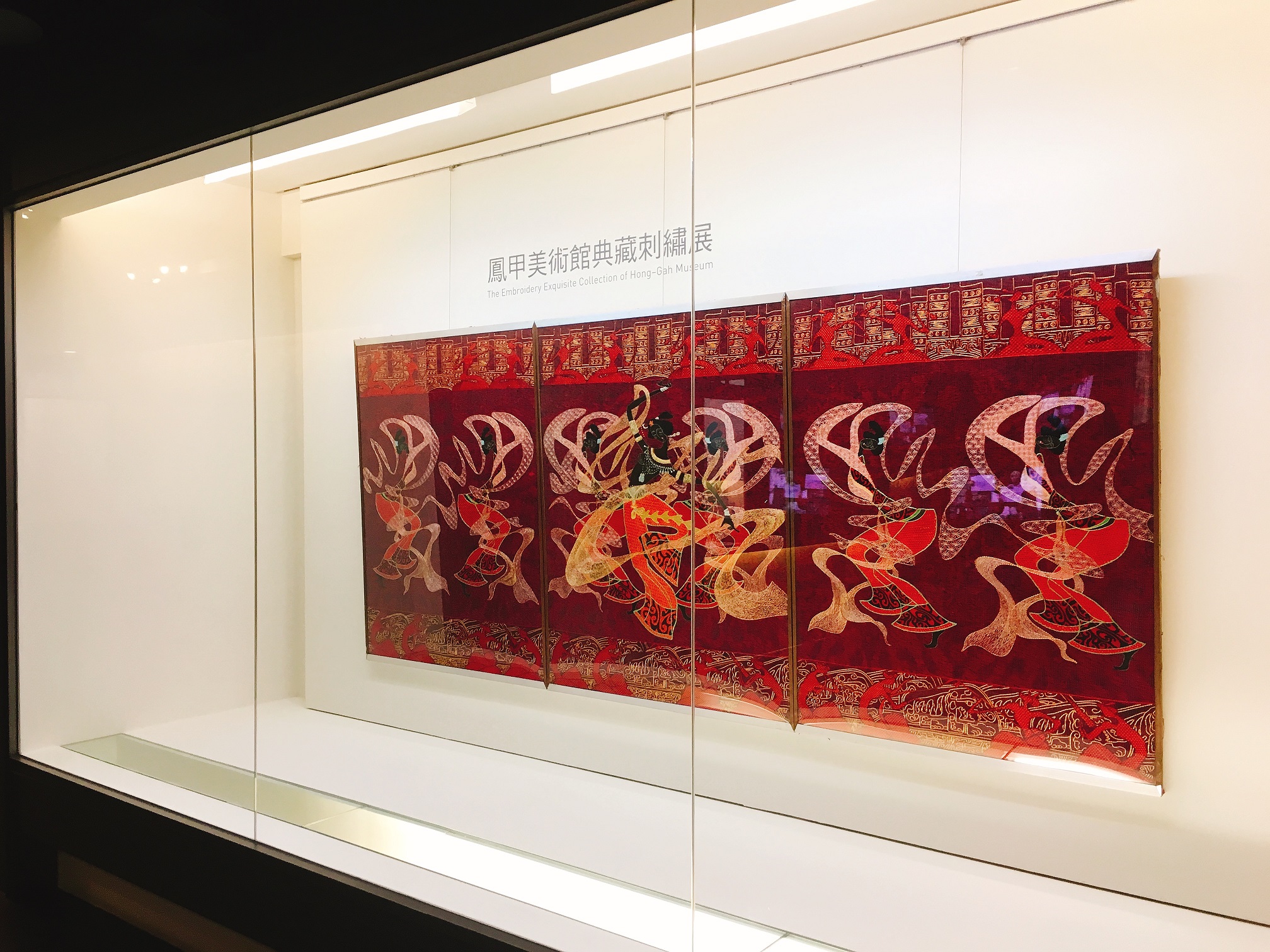BACK
Hong-gah’s Embroidery Archive Exhibition

Hong-gah Museum has more than 2,500 pieces in its collection, among which, the collection of embroidery artworks is the most complete and most systematic. This permanent exhibition includes artworks from“Immortals Toasting the Birthday of Heavenly Queen Mother”that marks the peak of embroidery craftsmanship, the innovative antique“War States Period Bell Chime Dance”, to “Cultural Revolution Embroidery” that mirrors the history of the Chinese Cultural Revolution. Every artwork intertwines and weaves out the story of times as well as the timeline of embroidery culture.
Innovative antique – “War States Period Bell Chime Dance”
Originally of the series of a double-sided screen, “Tangs Play Polo & War States Period Bell Chime Dance”, “War States Period Bell Chime Dance” will be showcased in the exhibition. Along the history of Chinese embroidery, a variety of embroidery techniques, classical and folk alike, were developed. “Tangs Play Polo & War States Period Bell Chime Dance” has especially made a breakthrough on this regard.
“War States Period Bell Chime Dance” consists of 7 dancers who are dancing. The composition as well as the overall design of the embroidery refers to the pattern of “Amphibious Warfare Bronze” of Warring States Period. Composedof three sets of dancers,the composition follows a cross-sectional layer structure. It adopts the style and technique of Dunhuang Frescoes, Han Dynasty Portrait Stones, and Hubei Modern Bell Chime Dance, using symmetrical outlines to exaggerate the movement of dancing. The curves are elegant and the dancing movement are transmuted and exaggerated, with streamers flowing in between to depict its whirling dynamics. The musicians are sketched with thick French Nots, while the Bell Chimes and music instruments are outlined with golden threads, similar to the gold and silver inlay of Han Dynasty. At the center there are one leading dancer and two accompany dancers, while on the other two pieces there are two dancers respectively. The compositions are identical to each other. Only the two sides of the piece tell the difference.It forms a consecutive pattern in both directions horizontally. The three pieces can be rearranged, so as to form different and yet seemingly endless pictures. The background uses dark purple Taotie and Dragon & Phoenix patterns commonly seen on ancient bronzes. On top of the cold red background there lie the black nude women in warm, pure red clothes, dancing with yellow and white streamers, giving a sense of intricate luxury on color. Two lines of macramé patterns decorate the top and the bottom of the picture, the musicians of bell chimes and other instruments respectively. The top are the bell chimes and female musicians, while the bottom are Flute, harp, Nguyen, Sheng and female musicians. The female musicians are in plane silhouette with their bell chimes and other instruments outlined with gold threads. The refined dynamic silhouettes and the intricate gold outlines form a juxtaposition of colors and lines. Altogether they give off an ambience of symphony that tells the brisk zeitgeist of the time.
The Mirror to the history of the Chinese Cultural Revolution – “Cultural Revolution Embroidery” – Praise unto the Vietnamese’ Fight against Americans
This embroidery artwork was created prior to the Chinese Cultural Revolution, adapted from a gouache. This piece vividly depicts the characteristics of the time. That is, it turns a gouache that depicts the physical spacial relationship and captures the subtle change in colors into somewhat plane deliberately, more of a mural of popularity and struggle. The embroidery keeps the spirit of the original work, yet leaves out the subtlety in pursuit of rugged, contrast style. Its colors are bold and strong, yet the portrayal of facial expressions and hands are rather delicate. The art piece employs straight stitch, gradient stitch, and cross stitch. Such print-like embroidery is a rarity that this piece is one of the very few embroideries left nowadays, which has profound historical value.
An Oil Worker amidst a Blizzard
This art piece is an adapted work of a classical landscape painting back in 1960s, which portrays the scene of the development of Daqing Oilfield, Heilongjiang. It is a classical portrayal of Chinese workers. The image of the figure derives from Wan Jin Xi, the so-called “Iron Man”. Amidst a blizzard, he carries an oil pipe onto his shoulder, exploring and drilling oil in a primitive way for the new China. The protagonist is in high-spirit with Mao’s books, “On Contradiction” and “On Practice”, in his left pocket, standing in front of a tall derrick. Regarding the embroidery technique, this artwork employs straight stitch, gradient stitch, and cross stitch to illustrate the background as well as the figure amidst the blizzard. The spatiality of the environment, the texture of the clothes, and the demeanor of the figure are depicted into details, true to life.
Date:2016. 05.28-2016.07.17





